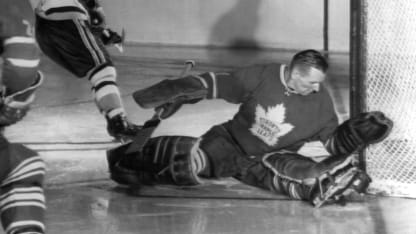The impact of this elite performance can be measured in two important ways. The primary is the Stanley Cup, which Bower won four times (1962, '63, '64 and '67). Four goalies have won the Cup more times: Plante (six), Dryden (six), Turk Broda (five) and Grant Fuhr (five).
Bower's impact also can be measured using goals saved above average (GSAA), which is calculated by multiplying the League-average save percentage by the number of shots faced to determine how many goals a League-average goalie would have allowed and then subtracting the number that was actually allowed. Add it up for his NHL career since 1955-56 and Bower prevented 225.3 goals relative to a League-average goalie, which is 10th. Esposito is first with a GSAA of 476.7.
These results are even more remarkable when considering that Bower's NHL career began so late. Except for one season as the No. 1 goalie for the Rangers in 1953-54, Bower did not establish himself in the League until 1958-59, when he was 34. If Bower played in the NHL during his prime, then his GSAA could have been higher and possibly even the best.
Bower played 466 games past his 34th birthday, which leads NHL goalies. Among the seven goalies to play at least 300 games at age 34 or older, his save percentage of .922 ranks first, 10 points above the group's average of .912. The list includes Plante (.918 in 308 games), Hasek (.917 in 342 games), Martin Brodeur (.913 in 453 games), Dwayne Roloson (.910 in 408 games), Ed Belfour (.908 in 413 games) and Esposito (.893 in 371 games).
Based on an examination of Bower's peak between 1963-64 to 1967-68, it's possible to get a clue of what he would have achieved had he broken in the NHL sooner. In those five seasons, his .930 save percentage was first among those to play at least 100 games. The other goalies within fewer than 20 save percentage points were Hall (.921), DeJordy (.916) and Worsley (.913).
During this time, Bower's SV%+ was 130.7, which means it was 30.7 percent higher than the League average between ages 39 and 44. We can only speculate how much higher it would have been in his 20s, but his numbers are already perfectly sufficient to consider him one of the top five goalies in history.

